Do you like to stand out in the crowd, but don’t want to compromise on performance? Meet the Diavel V4
The first Diavel debuted in 2010 with the theory of putting a superbike-spec engine into a cruiser chassis as the ultimate hot-rod boulevard brawler. Thirteen years on, the theory remains the same but with added tech and a whole different engine to showcase in the Diavel V4.
With the success of Ducati’s V4 engine in MotoGP and Superbike racing, it was only a matter of time before the Diavel would cop a major overhaul and a V4 engine. Ducati didn’t hold back either; the Diavel is new from the ground up and it is every bit the weapon it should be but with all the modern technology and poise.
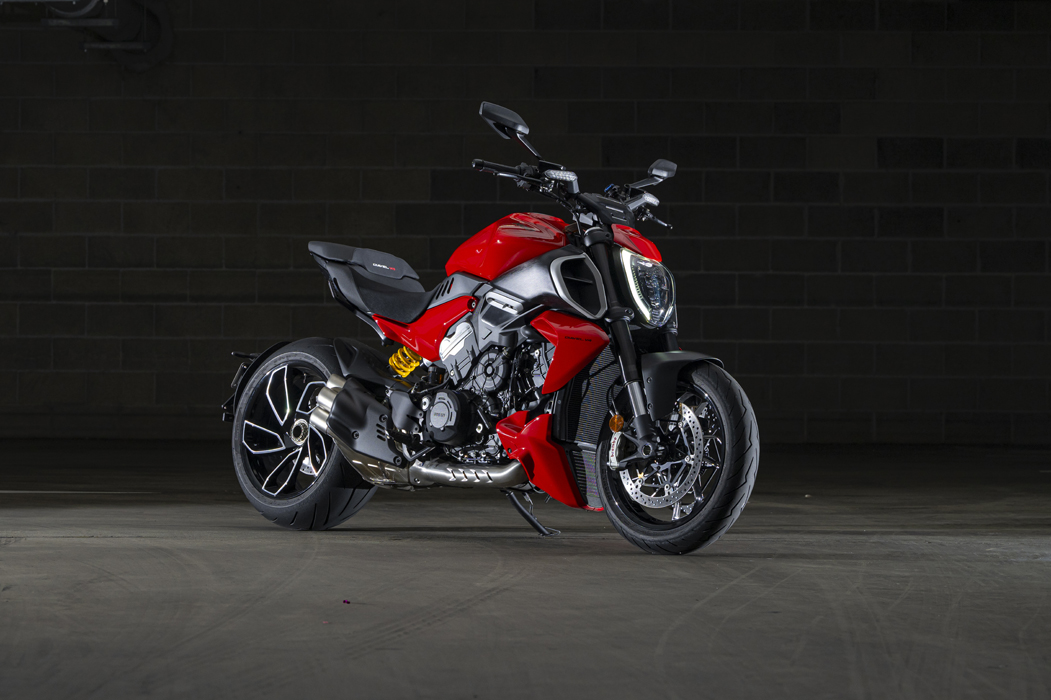
The centrepiece of the Diavel V4 is the 1158cc 90º V4 Granturismo engine. And what a centrepiece it is. It pumps out a lazy 124kW (168hp) of power and 126Nm of torque. Diehard Desmo fans will shed a tear at the thought of valve springs featuring inside the Diavel’s heart instead of Ducati’s famous desmodromic valvetrain, but every cloud has a silver lining and in this case, it’s a much quieter valvetrain and long 60,000km valve check intervals.

The Granturismo V4 engine sounds huge and thunderous, but it’s actually quite a small package and the rear cylinders are hidden by a cover which makes the engine look much larger. As the engine is the showpiece of the Diavel V4, the chassis is of the monocoque variety and runs up over the engine leaving the beast in view with minimal body work to get in the way.
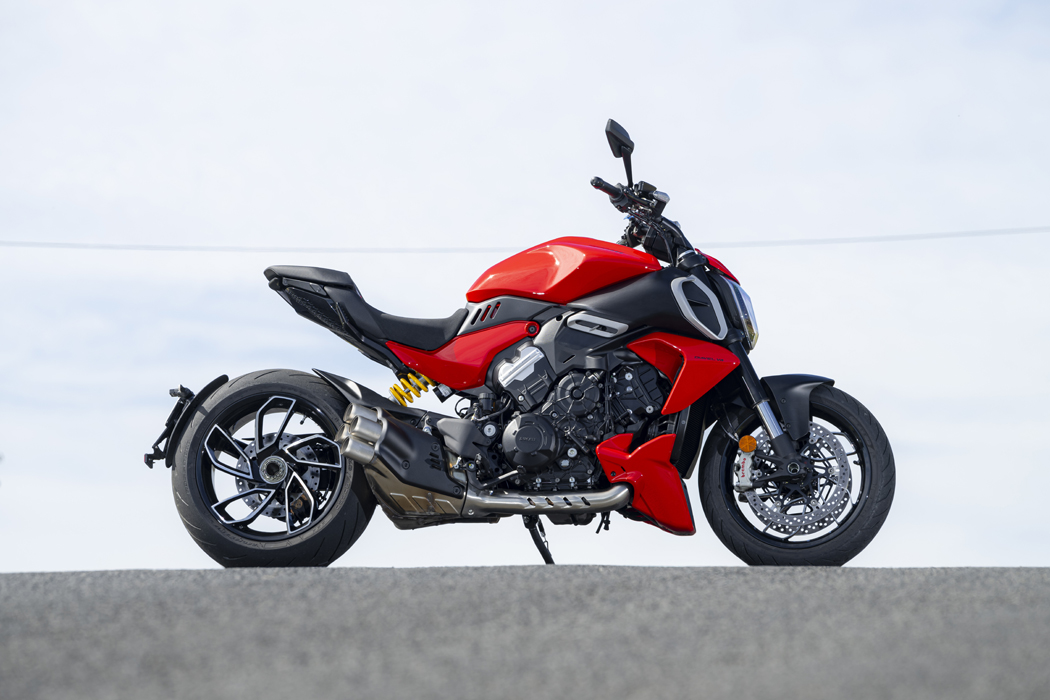
The single-sided swingarm allows a massive eight-inch wide rear wheel to be put on show and it looks simply mental. While not everyone’s cup of tea, the exhaust is a quad-exit engineering marvel. With strict Euro 5 emission targets to meet, the bike is proper snuffed but still manages a bit of a note. There is quite a bit of technical witchcraft going on inside that exhaust, the sound changes quite a bit depending on revs and throttle position. The servo-controlled valve in there is working overtime trying to work out if it’s go time or quiet time. The silencer looks okay but owners may want to swap it out for something with a bit more street cred.

In stock form, a fair whack of the noise is emitted from the airbox up behind the headlight, it’s so free flowing that you can see straight into the paper air filter when the ’bar is turned – no wonder it sounds so glorious at full noise. LED lights are of course featured all around the motorcycle. The trademark DRL around the headlight screams Ducati at anyone going in the opposite direction on the road, and anybody following is rewarded by a cool X-shaped tail light design. The attention to detail is top of class – little things like adjustable levers, keyless ride system, backlit switches and the beautiful five-inch colour TFT dashboard. Special mention for the fold-out pillion footrests and the pull-out pillion grab handle that slides out from under the passenger seat. The Diavel V4 is full of little niceties.
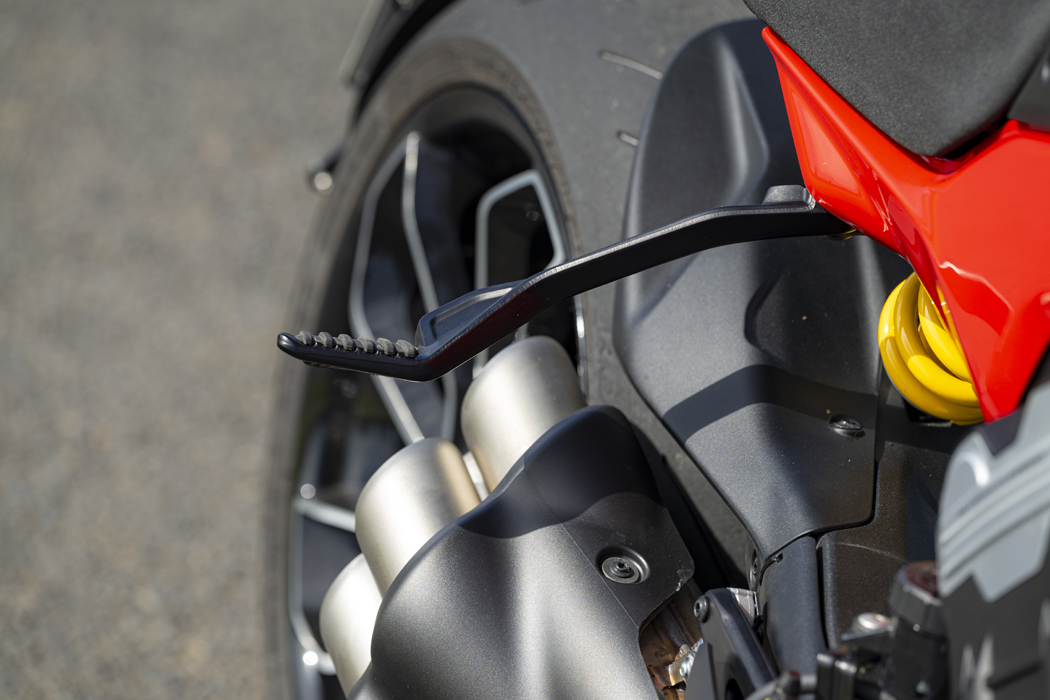
As expected, the Diavel V4 is no slouch. The long, low geometry and launch-control program makes you feel like Pecco Bagnaia at the start of a MotoGP race as you rocket away and click gears with the front wheel hovering just off the tarmac. The glorious snarl of induction noise becomes an addiction and it just keeps egging me on for more as I click through the gears with the quickshifter.
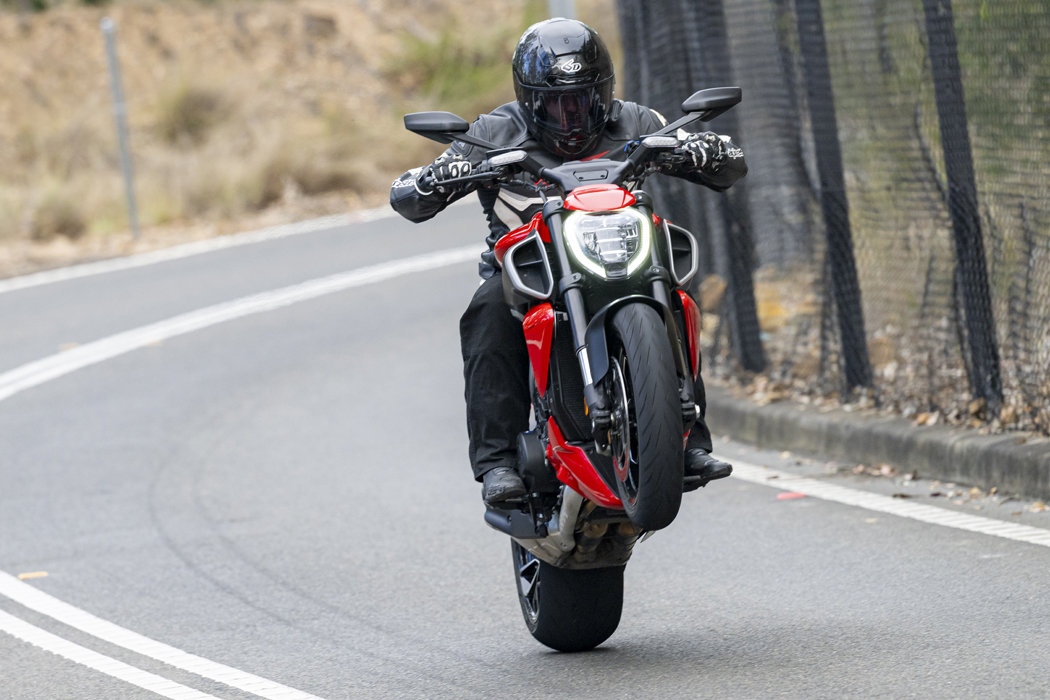
De-activating the wheelie control will allow power wheelies through first and second gear – and even in third if there are some undulations on the road. That certainly doesn’t happen on your average cruiser. The Diavel V4 is loaded up with seemingly endless rider aids thanks to the top spec six-axis IMU. The IMU casts a watchful eye over your riding in an effort to keep the Ducati rubber-side-down at all times. The Diavel gets the top level Ducati Traction Control Evo 2, Ducati Wheelie Control EVO, Ducati Power Launch Evo, Ducati Quick Shift Evo 2 and ABS Cornering Evo. This is the same tech found on the Panigale V4 so the Diavel isn’t bringing a knife to the gunfight. All these aids are adjustable within each ride mode and can also be turned off.

The four modes are Rain, Urban, Touring and Sport. Each mode is customisable but generally the Rain mode is low power with max rider aids, Urban mode is similar with a little less traction control and wheelie intervention. Touring mode is set to have max power but with a soft throttle sensitivity and mid-level traction and wheelie control. Sport mode has full power again, but with a direct throttle sensitivity, with low TC intervention, sportier ABS and low wheelie intervention. With traction control on, you can feel the bike holding back the power while cranked over and gradually allowing more power as the bike stands up on corner exit.

I ended up setting Sport mode to have no TC and no wheelie intervention which gives a more raw, old-school performance. The Diavel does love a wheelie and also laying down bulk rubber all over your favourite set of bends. While hooning is an absolute riot, it isn’t the only feather in the cap of the Diavel, it can also cruise with the best them. The engine makes oodles of torque down low and the throttle connection is very precise and predictable.
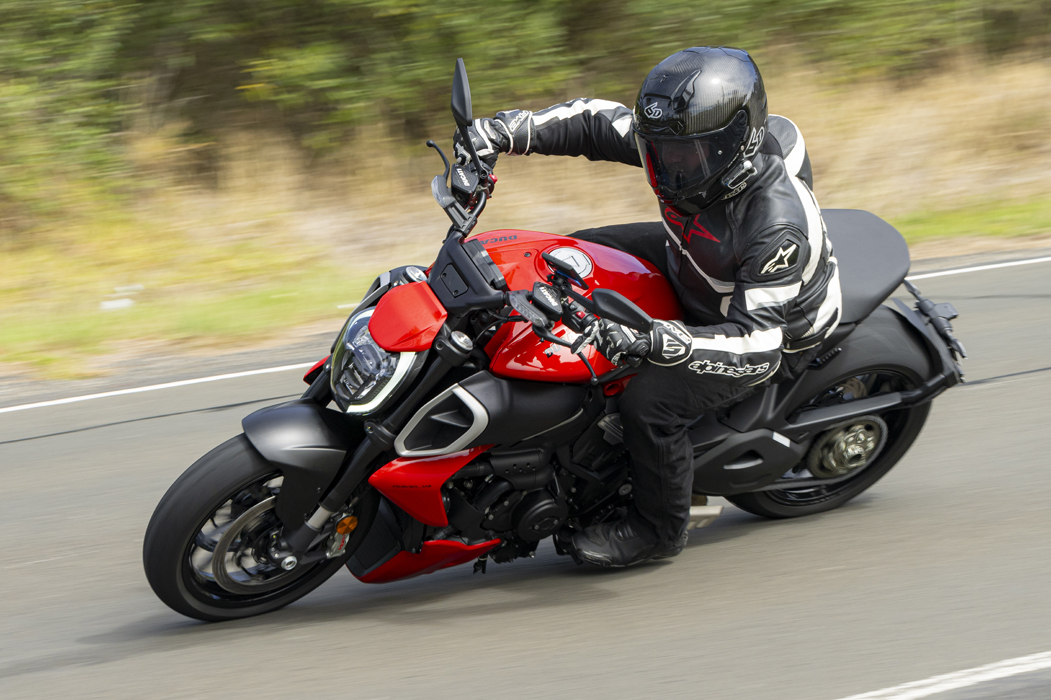
While tootling along low in the revs, the engine can feel a little clunky through the drivetrain, I find cruising a gear lower than I would usually a bit more comfortable to have the engine spinning a little more. While riding at a steady pace, I can hear the engine shutting off the rear two cylinders to create less heat and save fuel as well as when pulled up at the traffic lights with the clutch in. As soon as you either release the clutch or twist the throttle, all four cylinders come back online for maximum drive.
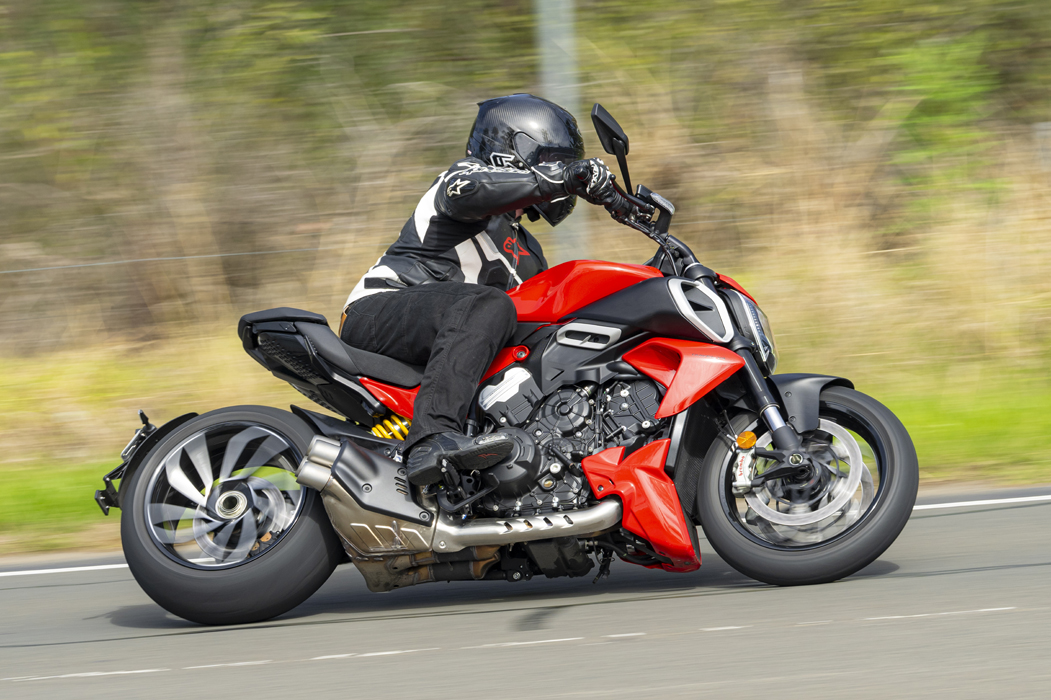
The quickshifter is a real pleasure to use even while low in the revs. The ECU takes into account gear, revs, throttle position and even lean angle now to ensure the smoothest gear change possible to retain maximum traction and drive just like the Panigale V4.
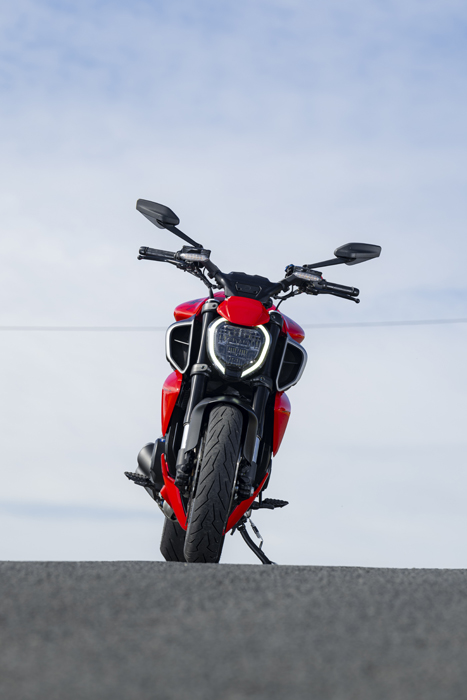
The handling is looked after by Sachs equipment. Down the back there is a fully adjustable monoshock attached to a chunky single-sided swingarm housing that massive rear wheel. I don’t envy the workload of that poor rear shock in managing the 240-wide rear tyre getting an absolute pounding by my heavy throttle hand. Even while intentionally breaking traction when powering out of corners in the twisties, the rear-end was up to the task. I could do with a little more preload to reduce the exhaust and ’pegs scraping mid-corner when there are bumps, but the onboard tool-kit consists of only one allen key.

Up front is a chunky 50mm fork that provides a very planted feeling when the wheel is on the ground. It is adjustable for preload, rebound and compression. Steering the Diavel V4 up a twisty stretch of road takes a little bit of effort depending on how brisk you want the ride to be. The massive rear tyre does feel a little bit strange on changes of direction as the contact patch goes from one postcode to another, but once settled into the next corner it holds a line very well and without protest.
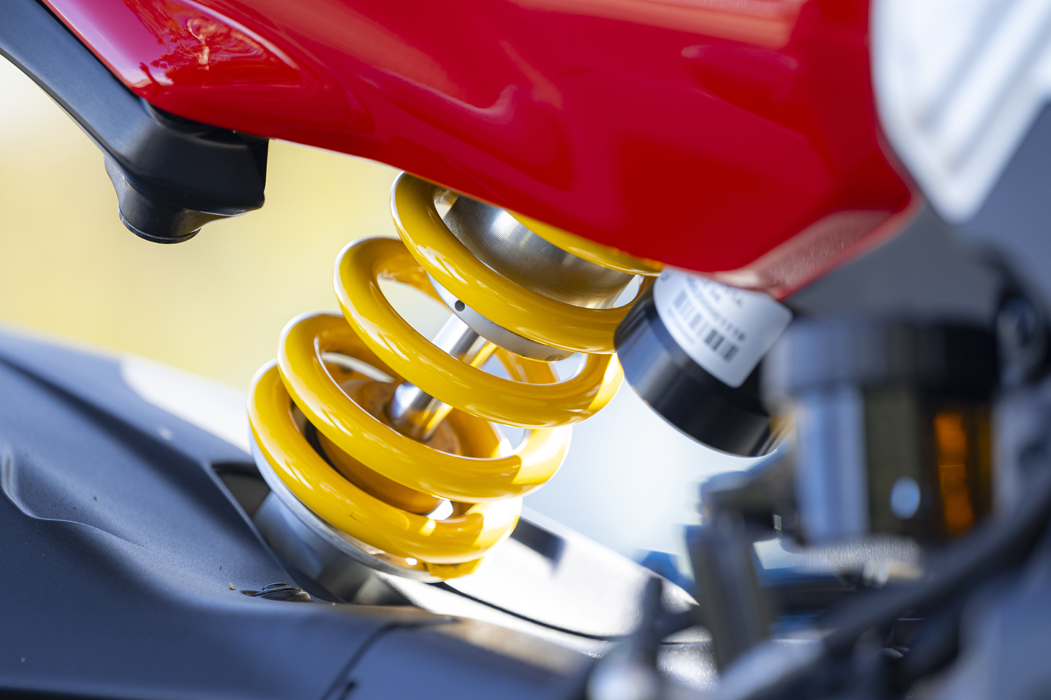
The first real reminder that you are riding a cruiser is when your feet and ’peg touch the ground in a corner, the cornering clearance is by no means poor, but the bike does suck you in a bit with it’s cornering stability encouraging more speed and lean angle.

The Brembo Stylema calipers with 330mm discs put an intense load on the front-end of the Diavel V4, so the fork cops a fair old workout dragging 236kg plus my weight to a grinding halt, but they do so faultlessly without needing a gym membership to squeeze the lever.
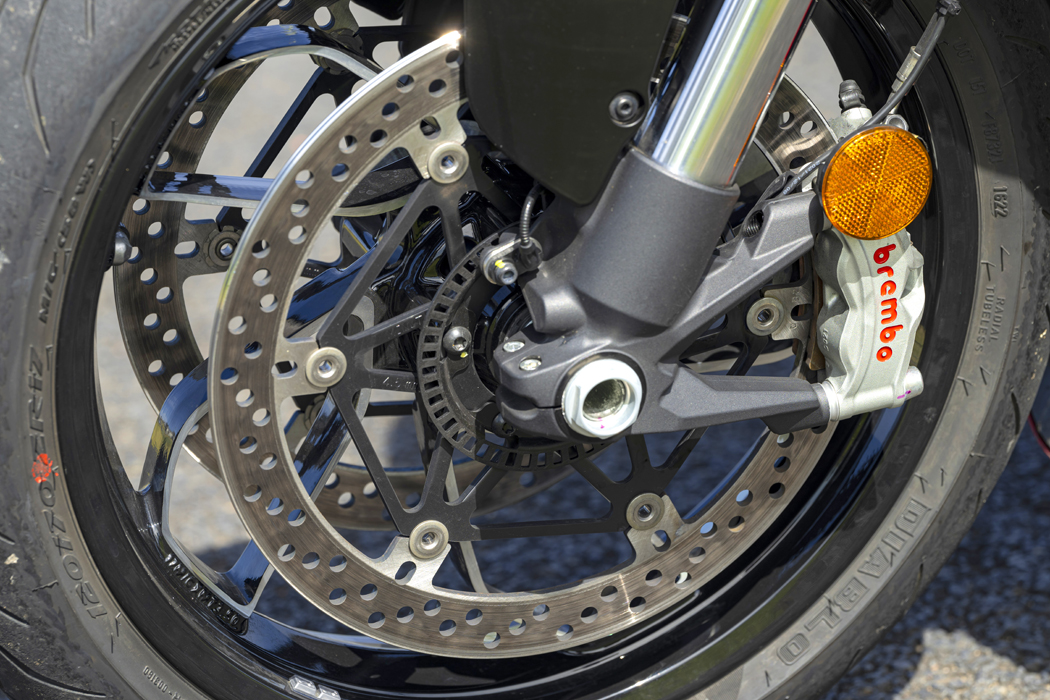
While probably not Ducati’s first consideration, comfort on board the Diavel V4 is quite reasonable. The rider’s seat is sculptured in a way to stop the rider sliding straight off the back when launching, so it has a bit of a backstop built in. The seat is low and wide with a little bit of room to alter your seating position fore and aft. Planting two flat feet on the ground is no drama for the average rider as the seat is only 790mm off the ground.

While the wind protection appears to be non-existent, the brunt of the wind is directed away from your chest. If you don’t like the wind in your face, best check out the optional screens that attach above the headlight. The best fuel consumption I managed was 6.14L/100km, so its 20L fuel tank can get the Diavel V4 about 320km which would be easily achievable in one sitting. The seating position is quite relaxed without having to reach for the handlebar so fatigue is minimal riding longer distances. Thanks to the Ducati connect app, hooking up your phone and Bluetooth headset to the Diavel allows control of messages, music and phone calls on the fly, and the bike is ready for turn-by-turn navigation once purchased through the app.
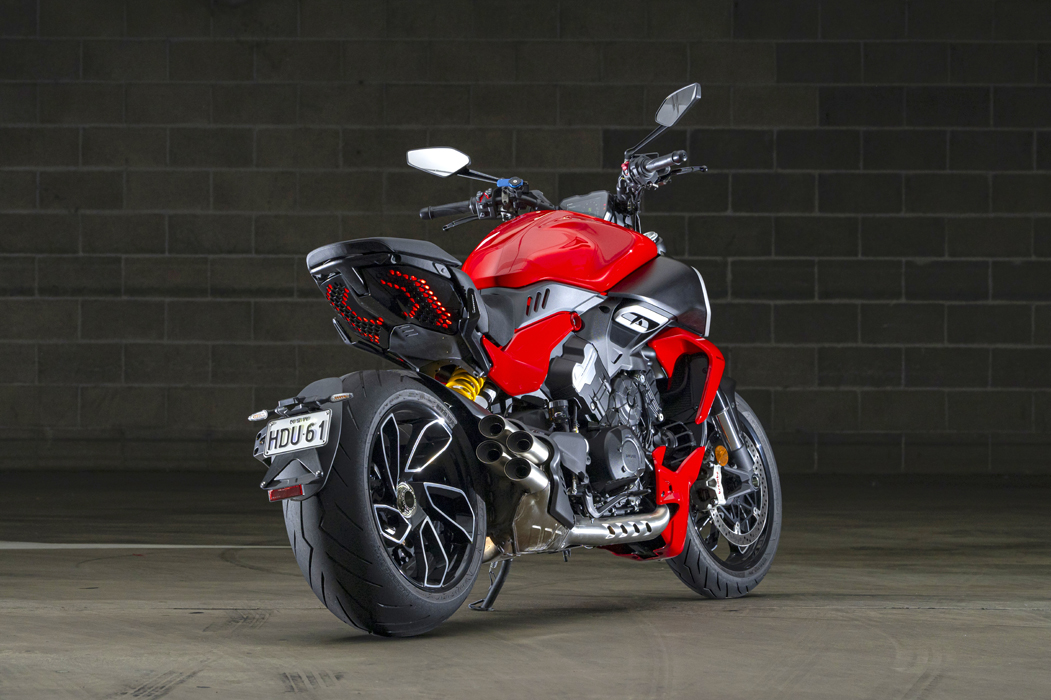
The Diavel V4 comes with a two year unlimited kilometre warranty and roadside assistance for extra peace of mind. So, what’s it gunna cost? The Diavel makes bank at $41,100 (ride away) in standard form, but who’s going to leave it standard? It comes in Red or Black and there is only one model available so far, I imagine an S version would appear in the future equipped with semi-active Öhlins boingers and a heavier price tag, but for now, it’s this one or nothing.

There isn’t much not to like about the Diavel V4, I feel like I’m nitpicking to want heated grips as standard and a more substantial pillion seat that I almost lost up a bumpy road. Initially I had trouble cancelling the cruise control, as I would normally roll the throttle back or give the clutch a quick flick, but on the Diavel these don’t cancel the cruise control. But once aware of it, I just have to tap the brake instead.
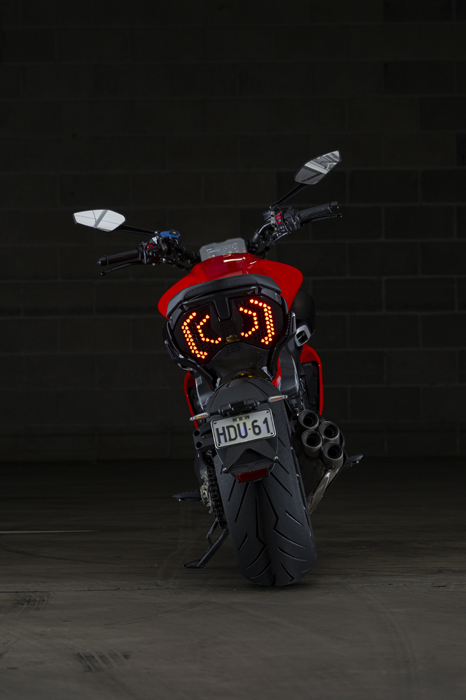
Otherwise, the bike is a work of art and an absolute weapon on the road. It is a genuine hot rod with little competition in the category.
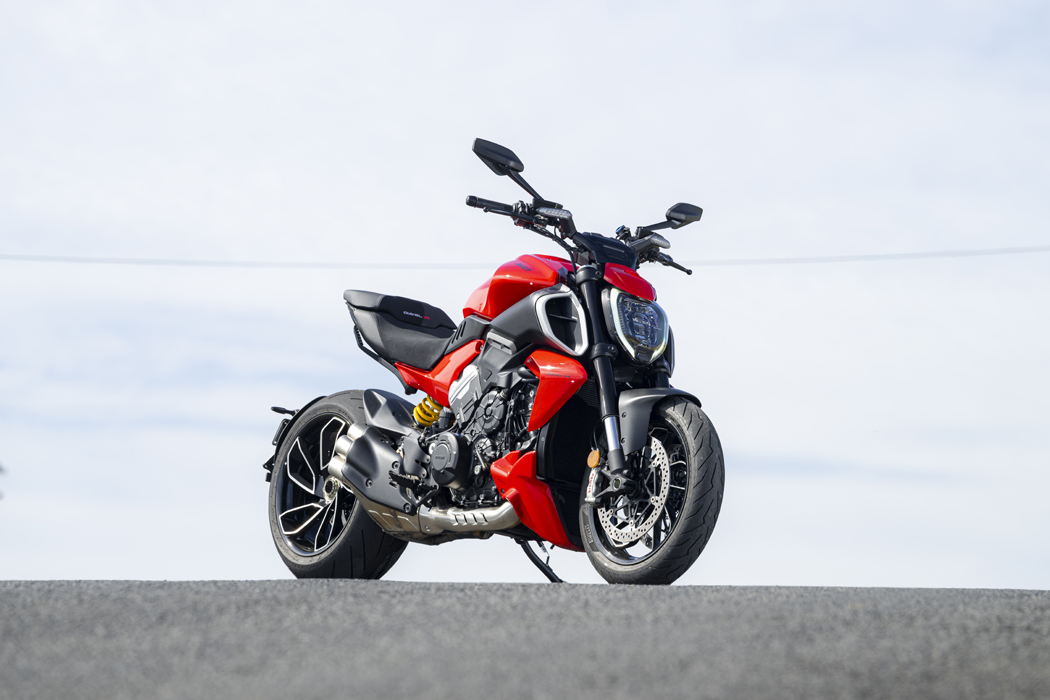
Test David Watt + Photography Incite Images